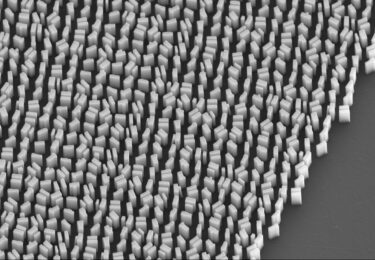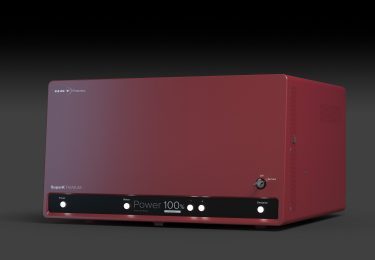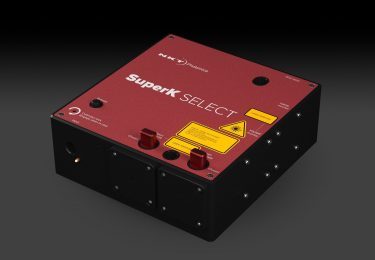Graphene is a single layer of carbon atoms held together by sp2 hybridized carbon atom bonds. Carbon nanotubes, essentially, are rolled-up sheets of graphene.
Examples of applications
Because graphene is such a strong material, it can be used to strengthen other materials. A sheet of graphene can be rolled up to form a carbon nanotube, which resembles a microscopic straw. Only, this straw is extremely thin and extremely strong at the same time.
Having zero effective mass, it does not add to the weight of the material it enhances. Obvious applications are building materials, aerospace, and others where lightness and strength are of the essence.
Graphene can also be used to spread heat due to its high electrical conductivity. This is especially useful in the microelectronics area, for strain sensors, supercapacitors, batteries that can recharge quickly, solar cells, and LEDs to name a few. It also makes it ideal for high-speed quantum physics experiments.
Due to its impermeability is can be used to filter water to get clean drinking water and graphene-based paint can prevent corrosion.
Use a SuperK supercontinuum laser to characterize graphene.
Get access to these techniques with our white light laser:
- Fluorescence quenching microscopy
- Scanning probe microscopy (SNOM/NSOM/STM/AFM)
- Absorption spectroscopy/microscopy
- Raman spectroscopy
- Photoluminescence (PL) & photoluminescence excitation (PLE)
- Surface plasmon resonance (SPR) adsorption spectroscopy
- Rayleigh imaging and spectroscopy
Publications
The work listed below uses the SuperK supercontinuum laser from NKT Photonics to characterize graphene or carbon nanotubes.
- Graphene/Ge microcrystal photodetectors with enhanced infrared responsivity by Virginia Falcone, Andrea Ballabio, Andrea Barzaghi, Carlo Zucchetti, Luca Anzi, Federico Bottegoni, Jacopo Frigerio, Roman Sordan, Paolo Biagioni, Giovanni Isella published in APL Photonics, 2022.
- Enhanced Photodetection Performance in Graphene-Assisted Tunneling Photodetector by Congya You, Wenjie Deng, Xiaoqing Chen, Wencai Zhou, Zilong Zheng, Boxing An, Songyu Li, Bo Wang, and Yongzhe Zhang published in IEEE Transactions on Electron Devices, 2021.
- Deciphering asymmetric charge transfer at transition metal dichalcogenide–graphene interface by helicity-resolved ultrafast spectroscopy by Hongzhi Zhou, Yuzhong Chen, Haiming Zhu published in Science Advances, 2021.
- On-chip torsion balances with femtonewton force resolution at room temperature enabled by carbon nanotube and graphene by Lin Cong, Zi Yuan, Zaiqiao Bai, Xinhe Wang, Wei Zhao, Xinyu Gao, Xiaopeng Hu, Peng Liu, Wanlin Guo, Qunqing Li, Shoushan Fan, Kaili Jiang published in Science Advances, 2021.
- Modification of graphene photodetector by TiO2 prepared by oxygen plasma by Yawei Liu, Beiyun Liu, Yi Wu, Xiaoqing Chen, Aibing Chen, Feihong Chu, Shubo Feng, Chen Zhao, Hongwen Yu published in Journal of Materials Science, 2021.
- A Varifocal Graphene Metalens for Broadband Zoom Imaging Covering the Entire Visible Region by Shibiao Wei, Guiyuan Cao, Han Lin, Xiaocong Yuan, Michael Somekh, Baohua Jia published in ACS Nano, 2021.
- Graphene metalens for particle nanotracking by Xueyan Li, Shibiao Wei, Guiyuan Cao, Han Lin, Yuejin Zhao, Baohua Jia published in Photonics Research, 2020.
- Remote nongenetic optical modulation of neuronal activity using fuzzy graphene by Sahil K. Rastogi, Raghav Garg, Matteo Giuseppe Scopelliti, Bernardo I. Pinto, Jane E. Hartung, Seokhyoung Kim, Corban G. E. Murphey, Nicholas Johnson, Daniel San Roman, Francisco Bezanilla, James F. Cahoon, Michael S. Gold, Maysam Chamanzar, Tzahi Cohen-Karni published in PNSA, 2020.
- Antimicrobial activity of graphene oxide quantum dots: impacts of chemical reduction by Mauricio D. Rojas-Andrade, Tuan Anh Nguyen, William P. Mistler, Juan Armas, Jia En Lu, Graham Roseman, William R. Hollingsworth, Forrest Nichols, Glenn L. Millhauser, Alexander Ayzner, Chad Saltikov, Shaowei Chen published in Nanoscale Advances, 2020.
- Metamaterial grating-integrated graphene photodetector with broadband high responsivity by Jingfeng Li, Chen Zhao, Beiyun Liu, Congya You, Feihong Chu, Nan Tian, Yongfeng Chen, Songyu Li, Boxing An, Ajuan Cui, Xinping Zhang, Hui Yan, Danmin Liu, Yongzhe Zhang published in Applied Surface Science, 2019.
- Graphene oxide-deposited tilted fiber grating for ultrafast humidity sensing and human breath monitoring by Biqiang Jiang, Zhixuan Bi, Zhen Hao, Qingchen Yuan, Dingyi Feng, Kaiming Zhou, Lin Zhang, Xuetao Gan, Jianlin Zhao published in Sensors and Actuators B: Chemical, 2019.
- Relative humidity sensor of S fiber taper based on graphene oxide film by Yang Zhao, Ai-Wu Li, Qi Guo, Xin-Yu Ming, Yong-Qin Zhu, Xiang-Chao Sun, Pu Li, Yong-Sen Yu published in Science Direct, 2019.
- Enhanced light–matter interaction of aligned armchair graphene nanoribbons using arrays of plasmonic nanoantennas by Markus Pfeiffer, Boris V Senkovskiy, Danny Haberer, Felix R Fischer, Fan Yang, Klaus Meerholz, Yoichi Ando, Alexander Grüneis, Klas Lindfors published in 2D Materials, 2018.
- Localized Charges Control Exciton Energetics and Energy Dissipation in Doped Carbon Nanotubes by Klaus H. Eckstein, Holger Hartleb, Melanie M. Achsnich, Friedrich Schöppler, and Tobias Hertel published in ACS Nano, 2017.
- Real Time Hyperspectroscopy for Dynamical Study of Carbon Nanotubes by Jacques Lefebvre published by ACS Nano, 2016.
- Fully integrated quantum photonic circuit with an electrically driven light source by Svetlana Khasminskaya, Felix Pyatkov, Karolina Słowik, Simone Ferrari, Oliver Kahl, Vadim Kovalyuk, Patrik Rath, Andreas Vetter, Frank Hennrich, Manfred M. Kappes, G. Gol’tsman, A. Korneev, Carsten Rockstuhl, Ralph Krupke, and Wolfram H. P. Pernice published in Nature Photonics, 2016.
- Excitation quenching in polyfluorene polymers bound to (6,5) single-wall carbon nanotubes by Angela Eckstein, Renata Karpicz, Ramūnas Augulis, Kipras Redeckas, Mikas Vengris, Imge Namal, Tobias Hertel, and Vidmantas Gulbinas published in Chemical Physics, 2016.








